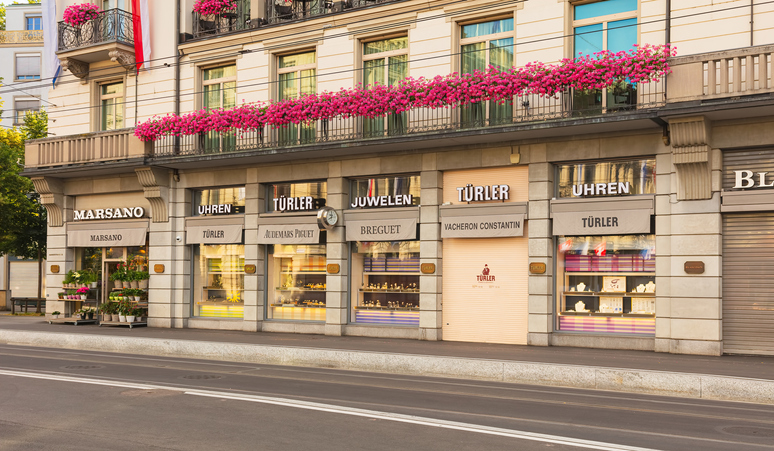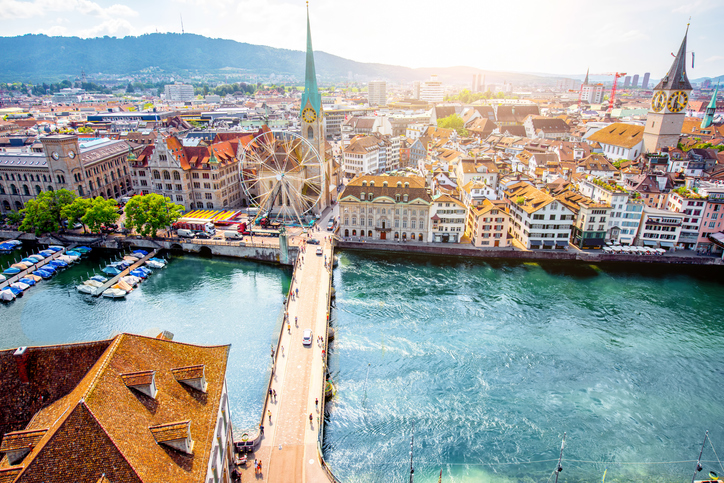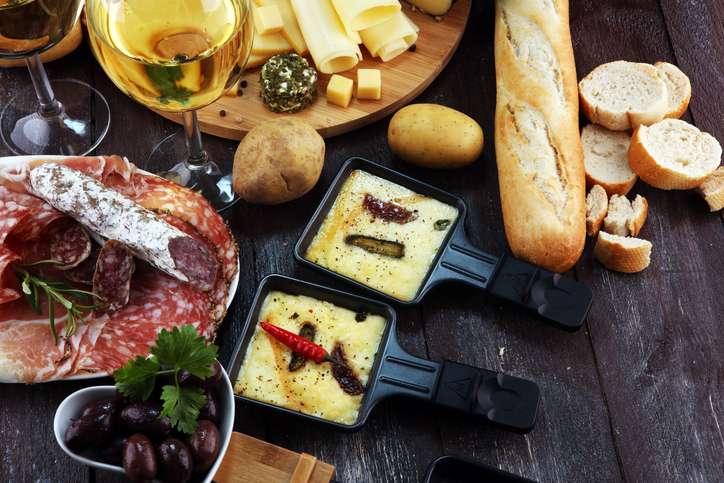If we think of Switzerland, most of us have this image of the Alps and idyllic green landscape. This small mountainous country in Central Europe is also known for its banks, watches, and of course, chocolate.
Today we visit the largest city in the country, Zurich, which is famous for its high quality of life, and being the financial centre of Switzerland, the fourth most prosperous country in the world. The first thing you need to know when visiting this country is that you need to bring plenty of cash. Prices are over the top, don’t say we didn’t warn you!
Zurich is located at the foot of a lake and overlooks the Alps, making it one of the most beautiful cities in Europe.
If you want to immerse yourself in Switzerland’s wealth, it’s probably best to start with the city’s Golden Mile, Bahnhofstrasse (Station Street), where you’ll find numerous banks, upscale restaurants and the most expensive shops selling luxury brands. A stroll along this exclusive, mostly pedestrianised avenue is a must.

The most charming neighbourhoods are also found in and around Bahnhofstrasse. Beautiful churches and narrow medieval streets abound in the old town, but there are also some great neighbourhoods worth checking out:
Lindenhof:
Situated on the Lindenhof hill, this is a great place to get an overview of the geography of old Zurich. It’s also the historical site of the Roman castle and boasts plenty of craft shops among its narrow streets. You can also play a game of chess on the giant-sized chessboard in Lindenhofplatz.
Altstadt
Literally, it means “the old town” in German. It’s an incredibly beautiful part of the city as it was never damaged during any wars. Picturesque lanes welcome tourists, and many of the main doors of the houses are decorated with tiles with different names on them. The reason? In Napoleon’s time, he decided to put tiles on the front of the houses to help soldiers who had drunk too much to find their home.
We also recommend visiting the Fraumünster, Peterskirche and Grossmünster churches in this neighbourhood. You won’t regret it.
You can also visit the twin towers of the Grossmünster, which were originally commissioned by Charlemagne, in the centre and admire the beautiful view of the city.
Another of Zurich’s landmarks is the Limmat river, whose pier is next to the National Museum. Vast green areas like Platzspitz Park also surround it, and weather permitting, you can swim in one of the designated areas.

Hip urban explorers will enjoy the Viadukt area, which wasoriginally a modest, unappealing industrial. But the area formerly known as Zurich West has been given a new lease of life and transformed into a modern, vibrant district full of cultural and artistic expressions.
The architecture is also extremely attractive. Current architectural elements have been added to the old factories to create remarkable shops and restaurants.
Freitag Tower is especially impressive as it’s the largest building in the world constructed out of recycled freight-containers.
Happy stomachs
Swiss food is high in calories but also almost impossible to resist. Raclette is the country’s signature dish. This is simply melted cheese accompanied by potatoes, onions and dried meat. It’s a semi-hard cheese and is usually fashioned into a wheel of about 6 kilograms.

Gruyère cheese is also hugely popular, and one dish we recommend trying is Älplemagronen (Swiss Alpine Macaroni), which is made with pasta, Gruyère cheese, potatoes, onions and applesauce.
Rösti is another national dish. It’s a type of patty with a crunchy texture made from grated parboiled potatoes and onions, fried in butter. It was originally eaten as a breakfast dish but is now widely used as a side dish.
And we can’t forget the flagship product: Swiss chocolate. There’s an endless number of recipes that swear by it while brands like Lindt, Toblerone and Cailler export its flavour to the four corners of the world.








